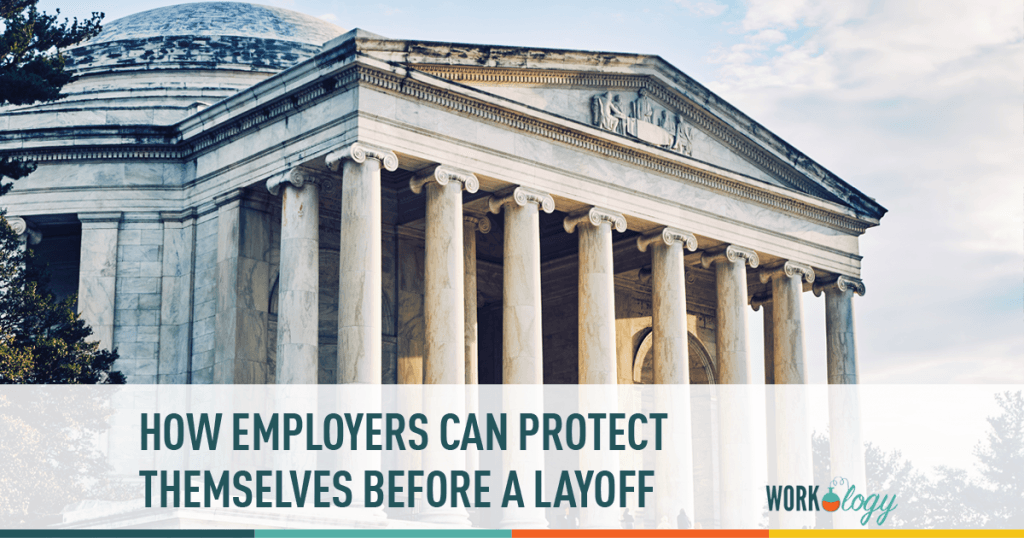The current economic downturn has not only been brutal for company balance sheets but for individual balance sheets too. It seems everyday when we pick up the newspaper big and small companies alike are announcing layoffs.
How Employers Can Protect Themselves Before a Layoff?
With the national unemployment rate at 9.4% in August, foreclosures on the rise, credit card debt climbing to unprecedented levels and many Americans wondering how they are going to make ends meet, it is no big surprise that there’s been an uptick in litigation against former employers. The EEOC reported a 15% increase in discrimination claims in 2008 compared to the previous year and many attorneys expect that number to be even higher in 2009. Consider when Lehman Brother’s laid off employees in January 2009 several former employees claimed the company did not give them the required 60 days notice under the WARN act. And, in October 2008 just as the downturn began, four female former executives/staffers of Dell, Inc. filed charges of age and sex discrimination alleging that the recent layoffs unfairly targeted women and employees over 40.
I am not suggesting that discrimination claims or claims of companies failing to follow legal requirements is something new, but with jobs being scarce and candidates competing with greater numbers of applicants for new positions, it is becoming increasingly likely that former employees will more closely scrutinize how they were treated by their former employer. And in situations where they perceive they were mistreated or where there is a perception of favoritism and/or discrimination, those employees may be more likely to file change. In good economic times, when opportunities are plentiful and pay is competitive, people may overlook how they were treated especially if they can make a quick transition to a better position with greater stability, income and benefits. But in today’s environment where there are literally hundreds of applicants for each open position and positions are typically lower paying than what many people had before it is no wonder former employees are considering lawsuits for misconduct on an employer’s part.
Limit Your Legal Exposure During Layoffs
According to Lawrence Z. Lorber, an employment lawyer at Proskauer Rose in Washington, D.C. “People take legal action out of desperation as it becomes more difficult to find new employment.” “When there is no job, there is no safety valve”, he said, “so people who have issues and then lose their jobs or have some adverse employment action taken, are now much more willing to file their suits.” So, what actions should employers take to guard against claims of discrimination? Well there are the tried and true steps that should always be followed including:
- Identify the reasons a layoff is necessary
- Look for alternatives
- Establishing an objective selection criteria
- Know the demographics of your workforce
- Conduct disparate impact testing
- Secure a signed release and waiver agreement
- Calculate both the obvious and the not so obvious costs of the layoff
- Determine if there are any contracts in place that should be reviewed and considered
- Review local, state and federal statutes such as FMLA, WARN, Military Leaves, ERISA etc.
- Consult with legal counsel
And then there are the things that aren’t so legalistic. These fall under the category of “Treat employees the way you would like to be treated” and “Do the Right Thing”. These include:
- Communicate, Communicate, Communicate
- Talk to your employees face-to-face
- Answer their questions openly and honestly – if you don’t know something say so and offer to help find the answer
- Provide advanced notice of the layoff if possible
- After the announcements are made, if employees are not leaving immediately, do not avoid them like the plague – treat them like the valued employee they are
- If they are leaving immediately don’t hand them a box and walk them to their desk to collect their things and then escort them out the door in front of everyone – give employees the opportunity to leave with dignity and offer them an opportunity to come back at a later time when there are fewer co-workers to get their things
- Treat employees the way you would want to be treated in a similar situation
While these actions won’t guarantee protection from a wrongful termination or discrimination lawsuit, most employees don’t sue their former employers because they had to make tough employment decisions or even because they made a mistake, people generally sue a former employer because of how they perceive they were treated – how you made them feel.
According to Joel Christiansen, a practicing employment attorney at Christiansen Law in Portland, OR,…”people take legal action because they feel a sense of injustice for the way they were treated and want to investigate whether they may have been subject to unlawful employment practices. From my perspective as a plaintiff’s lawyer, I would say, “companies take illegal actions out of desperation as it becomes more difficult for them to fulfill their moral obligations to employees.”
These things never take place in a vacuum, in addition to how you make an exiting employee feel, keep in mind that remaining employees will know how you treated their friend and co-worker and their morale and loyalty just might depend on your actions.









